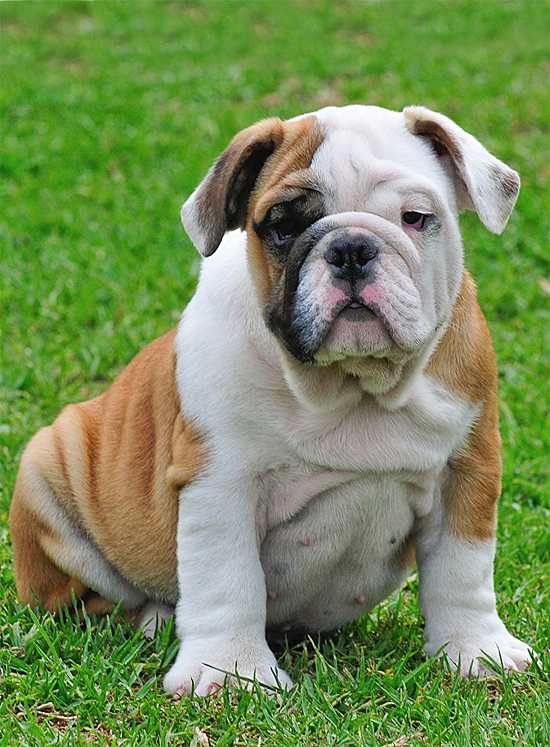English Bulldogs are one of the most beloved canines in the United States & Canada.
1. THEY WERE BRED TO FIGHT BULLS.
Bull baiting was a common blood sport in the United Kingdom from 1206 up until its inevitable banning in 1835. Bulldogs, which had been specially bred for the violent encounter, would creep low to the ground and attempt to bite the bull’s (or bear’s, or horse’s) nose. These tenacious dogs would hold on for dear life—often resulting in them being thrown into the air by the bull. Not surprisingly, many animals (and humans) suffered serious injuries and death during the course of this “sport.”
2. THEIR UNUSUAL LOOK HAD A GRUESOME PURPOSE.
Bulldogs were, unfortunately, bred to be highly efficient bull baiting machines. Their stocky bodies were good for keeping them grounded against a bull’s best efforts to launch them into the air, while their loose skin worked almost like a shield to protect their vital organs. Their face wrinkles served as channels, moving the blood down their faces and out of their eyes, and an undershot jaw pushed their bottom teeth up, giving them a better grip. Short snouts allowed them to breathe properly while holding onto a bull’s snout, and smaller back legs meant the dog could be shaken without sustaining any spinal injuries. In summary, the dog was an aggregate of bull-defeating features. Some said the dog barely even felt pain.

3. THEY NARROWLY ESCAPED EXTINCTION.
Once bull baiting was banned in England, bulldogs were suddenly not needed. It seemed like this breed’s days were numbered, but lovers of the dog saw potential. Fanciers began to breed the dogs to have kinder and gentler demeanors. Some bulldogs were brought to Germany and the United States, where they worked as herding dogs. Others stayed in England as companions.
4. THEY’RE INDEPENDENT.
Bulldogs are self-sufficient and determined, making them a lot more independent than others dogs. This confidence allows them to solve problems without looking at their owners for guidance, the way other breeds might.


5. KEEP THEM AWAY FROM THE WATER.
Thanks to their big heads and tiny backsides, bulldogs have a little trouble maneuvering in the water. Although some can swim, it’s best to keep an attentive eye on them in case they slip under.
6. THEY NEED SOME ASSISTANCE WITH REPRODUCTION.
Another result of the bulldog’s awkward biology is difficulty conceiving. Males have a hard time reaching the females, so to avoid unnecessary physical stress, breeders opt for artificial insemination.
The birthing process is also a bit of an ordeal thanks to the breed’s big heads and small birth canals. Since natural birth could cause injury or death, most bulldogs are born through C-section.
7. ENGLAND LOVES THEM.
England loves the bulldog; they’re even considered the national breed. In fact, in World War II propaganda, England was frequently portrayed as a tough-looking bulldog (Germany, meanwhile, was a dachshund, and the United States was represented by an American pit bull). Winston Churchill was often called the “British Bulldog” thanks to his demeanor (and possibly also his looks). Despite the nickname, Churchill owned two poodles.
8. ONE WAS VERY WELL-TRAVELED.
In 1903, Dr. Horatio Nelson Jackson set out on what is now considered America’s first road trip. Cars were still brand new at this time, and there were only 150 miles of paved road to explore, not to mention no road maps or gas stations.
Along for the excursion were co-driver Sewall K. Crocker and a bulldog named Bud. The bulldog wore a pair of riding goggles, just like his owner, to keep the dust out of his eyes. Although they made a number of wrong turns along the way, the trip proved that cars were the future of transportation.



